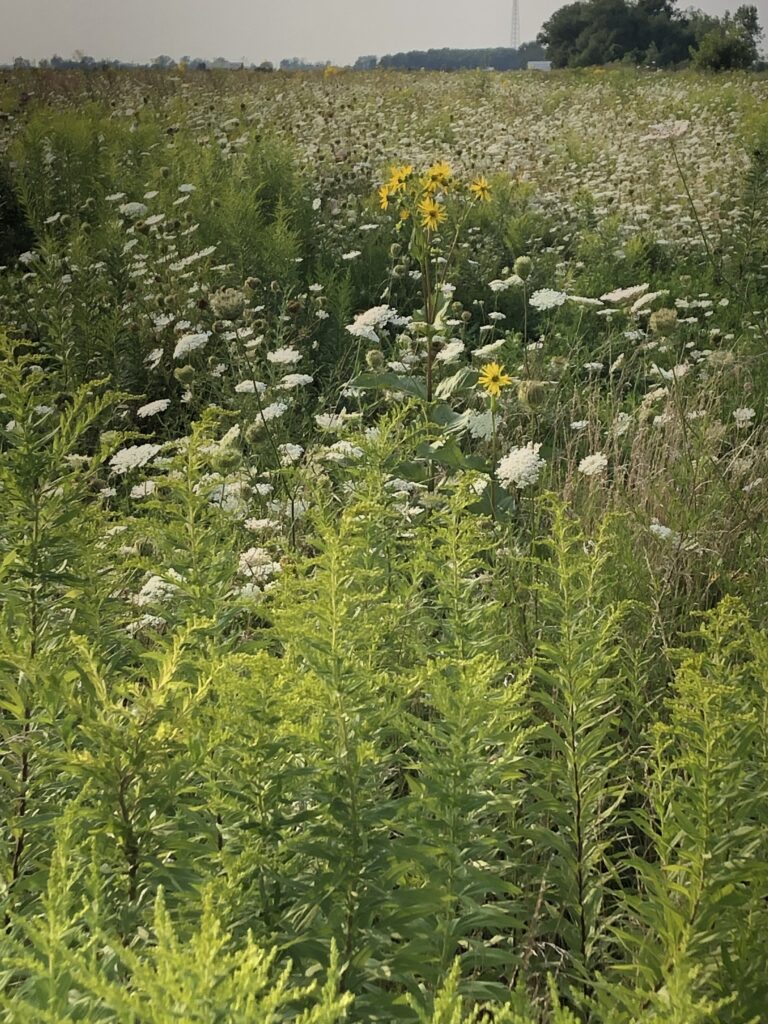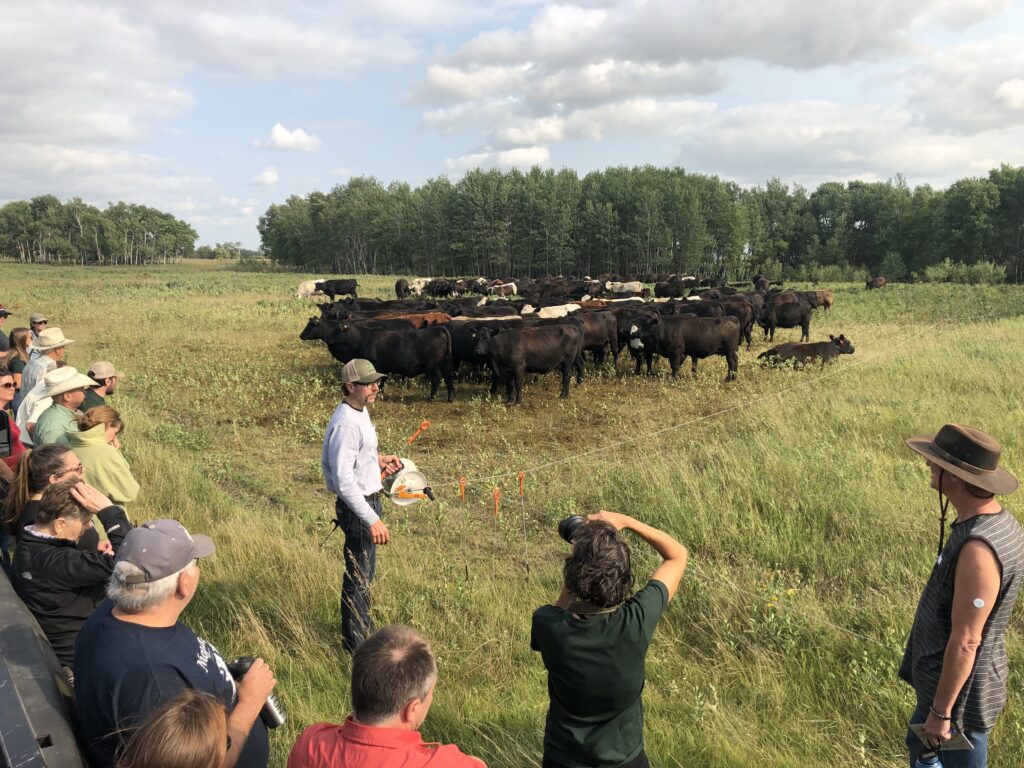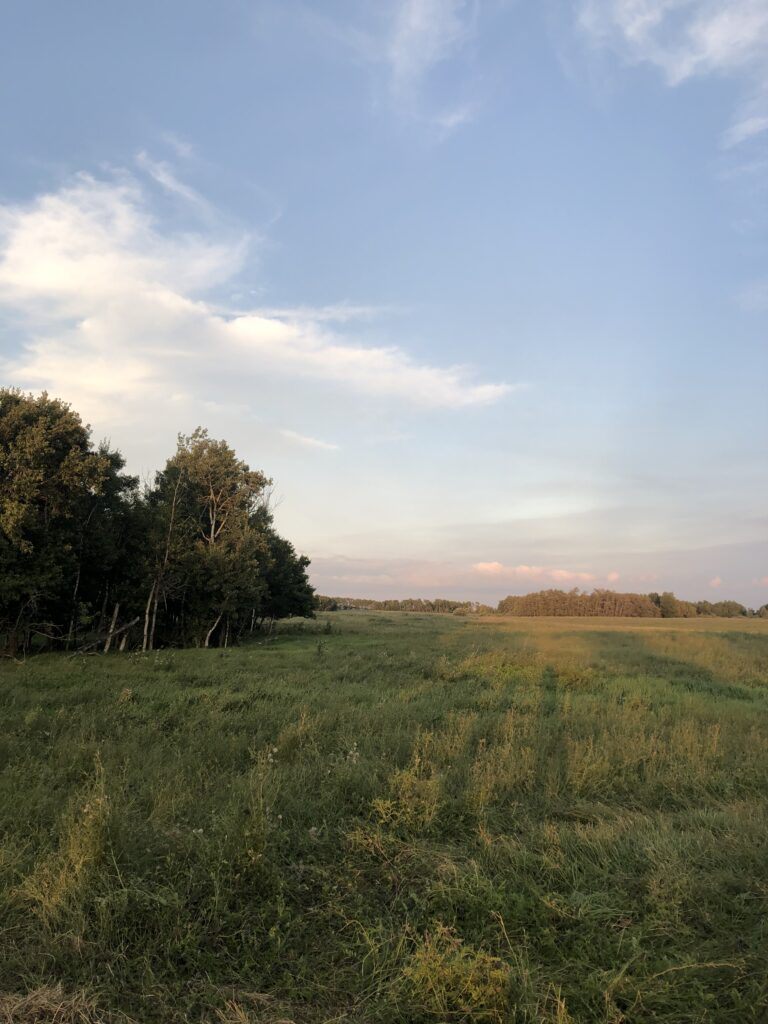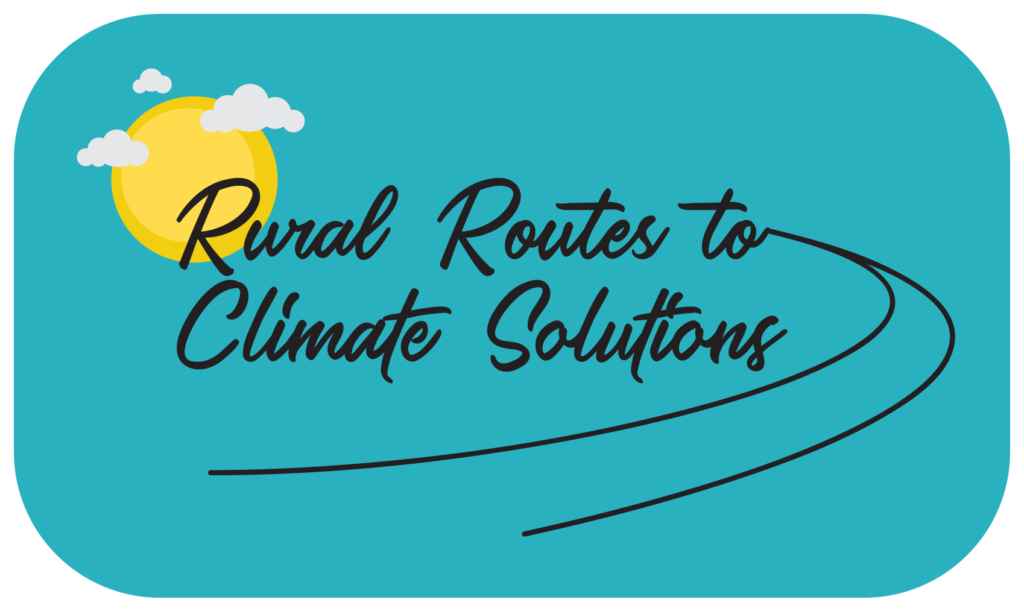By Derek Leahy
I really struggled with the title for this one.
For the central Canada leg of the Stories of Regeneration tour, I bounced between titles like Regenerating Meeting Places, Regenerating Ideas, Regenerating Open Minds, etc. In the end, humility remained firmly stuck in my head every time I thought about my experience at South Glanton Farms near Forrest, Manitoba and Bla-Kar Farms near Merlin, Ontario last August.
Ah yes, the humble peasant toiling in the field stereotype, right? Not exactly. Based on my experience working with Rural Routes to Climate Solutions over the last six years, agriculture has enough humility and modesty when it comes to belief in one’s self. There’s nothing to regenerate there.
The humility I noticed and experienced firsthand at South Glanton and Bla-Kar was more about the natural world and perhaps society at large as well. It reminded me that humility may be one of the keys to unleashing regenerative agriculture across the sector, something Rural Routes is mildly obsessed with (see Regenerative Agriculture Lab).
[Aside: Episode 47 of our podcast with Alberta agricultural producers Daryl Chubb, Tim Wray and Sheldon Atwood briefly covers the importance of humility when adopting a regenerative mindset].
A quick reminder on what the Stories of Regeneration tour is.
Stories of Regeneration is a project led by Regeneration Canada highlighting and sharing the stories of agricultural producers from across Canada who are using regenerative agriculture on their land. Over the coming months, the project will release a series of short films, articles and a podcast series, which is Rural Routes to Climate Solutions contribution to the project.
The differences between South Glanton and Bla-Kar weren’t as big as the differences between the three farms I wrote about in Regenerating Rural Opportunities. Bla-Kar grows mainly soybeans and corn with some livestock integration and South Glanton is a mixed grain and cattle operation. They had a similar start to the growing season—dry—but the rain did eventually come, almost too much in the case of Bla-Kar. How and where they farm varies quite a bit though.
The land Blake Vince of Bla-Kar manages is as flat as board and it is just above lake level so they need to use tile drainage so the roots of crops aren’t sitting in water all the time (the idea of too much soil moisture was a bit mind-boggling after living in Alberta for so long). South Glanton has hills and bluffs of trees and Ryan Boyd, who manages the farm, uses a grazing management system called total grazing, which, like tile drainage, was something I had never seen before. By comparison, Blake farms in a pretty densely populated area (over 100,000 people in his municipality) compared to Ryan.
[Another aside: being out at Blake’s place was the first time I had considered that one of the upsides of living in a rural community with a super small population is fewer people peeking over your fence when trying something new or innovative like regen ag.]
Like all the regenerative agriculture producers I have met on this tour and in Alberta, Blake and Ryan are doing something that goes against the grain (no pun intended). To maintain soil health, Blake is holding strong on the no-till practices his family has had in place for a while despite producers in his area switching back to tillage because of weed pressure (from what I understand). Looking at one of Ryan’s paddocks that had been ‘totally grazed’ (upwards of 80% grazed off) was a humbling experience for me. It went against what I had previously learned about good pasture management—graze 30%, trample 30% and leave 30%. I had to admit to myself that you get one heck of a long rest period for your pastures when you are moving that slow.
In our podcast episode 47, Irricana rancher Tim Wray said the question for him when he thinks of a regenerative mindset is whether he’s imposing his will on something or submitting to a mutual relationship with the land and the natural processes. It takes humility to submit to something, even if it’s a mutual relationship. Talking with Ryan and Blake reminded me if this is going to work—widespread adoption of regenerative agriculture—we need to accept and embrace this. And “this” ain’t going to be easy either. In that same episode, Tim also mentions we do not emerge from this unchanged or unscathed.

As a guy who has spent most of his adult life erroneously and arrogantly thinking he can bend reality to his will, submission has never been a concept that sat well with me. I do see value in it though and in the case of regenerative agriculture we are talking about a mutually beneficial relationship. The almost out-of-body experience I had at Bla-Kar is a good example of this.
Blake has allowed a piece of his land about the size of an acreage to revert back to a natural meadow more or less to create a habitat for pollinators and other wildlife (it has become a bird-watcher’s paradise apparently). The first thing I noticed when we arrived was how loud it was. Insects, amphibians and birds were making such an amazingly beautiful racket in that meadow. It was kind of eerie how quiet the fields of corn and soybeans were by comparison.
As I walked through the meadow, I was hit by flashbacks of my childhood. I grew up about 350 kilometres east of that meadow. My dad would take me hiking in a forest we always called “Balsam” (I’m not sure if that was its official name or something we made up) as often as he could get me out there. I loved the treed areas of Balsam, but the meadows scared me a bit. I was a pretty short kid and from what I can remember, the vegetation was well over my head and so dense that I felt I couldn’t see what was ‘lurking’ in the grasses, shrubs and forbs. I have a very vivid memory of getting lost and separated from my dad at Balsam and being in that meadow. The scariest 30 minutes of my life at that point.
Thirty years later and quite a bit taller, I found myself in a similar meadow with similar vegetation and sounds and thoroughly enjoying being transported back to a fairly formative part of my childhood (the work I do with Rural Routes likely has its origins in the forests of my childhood). I was amazed and humbled that a meadow could take me back to a time and place that I only think about occasionally. I was damn grateful for it too.



